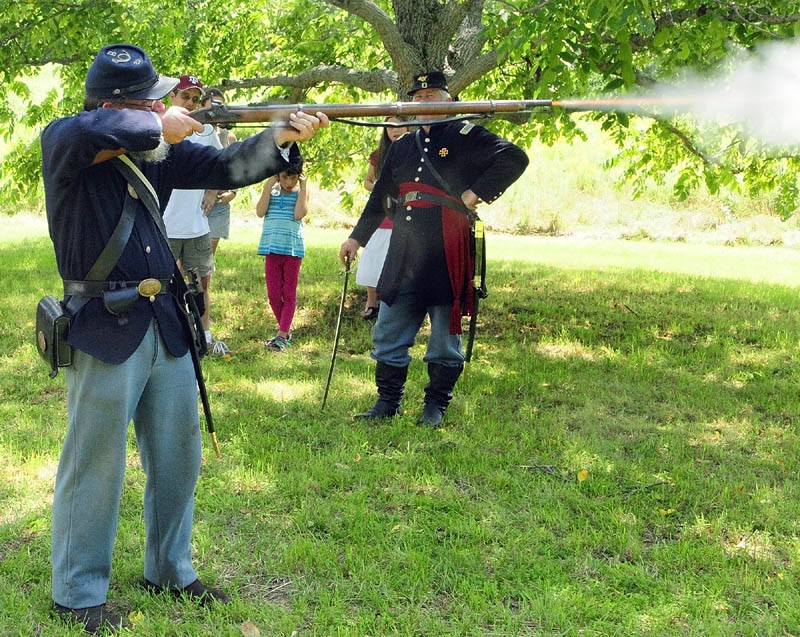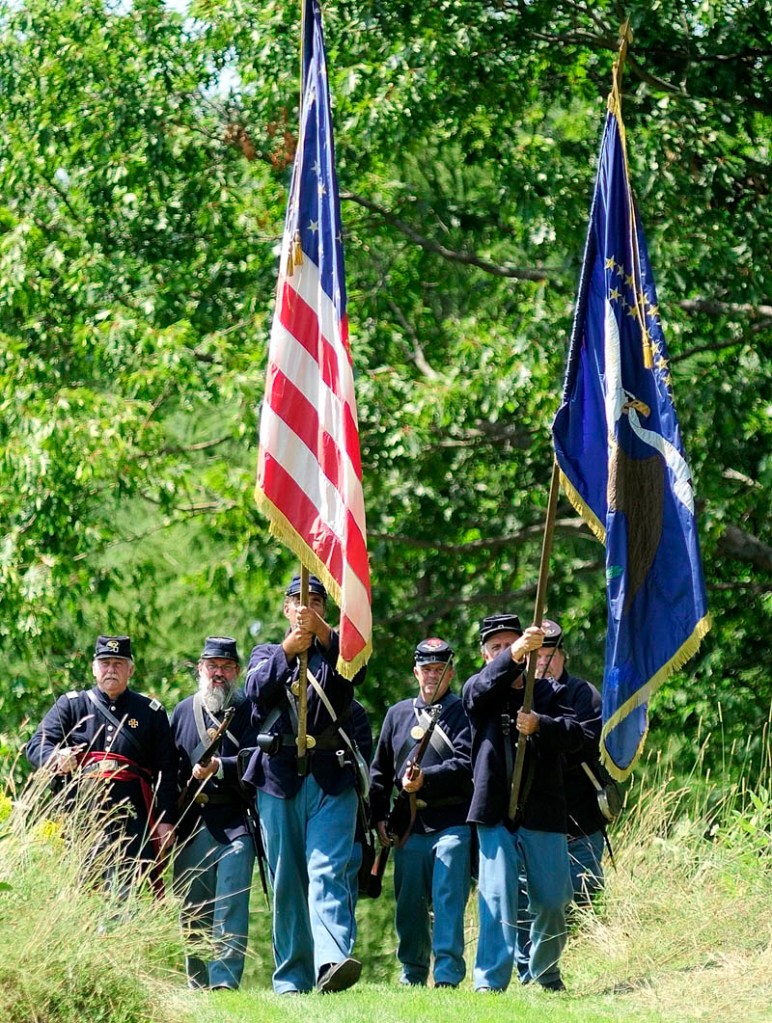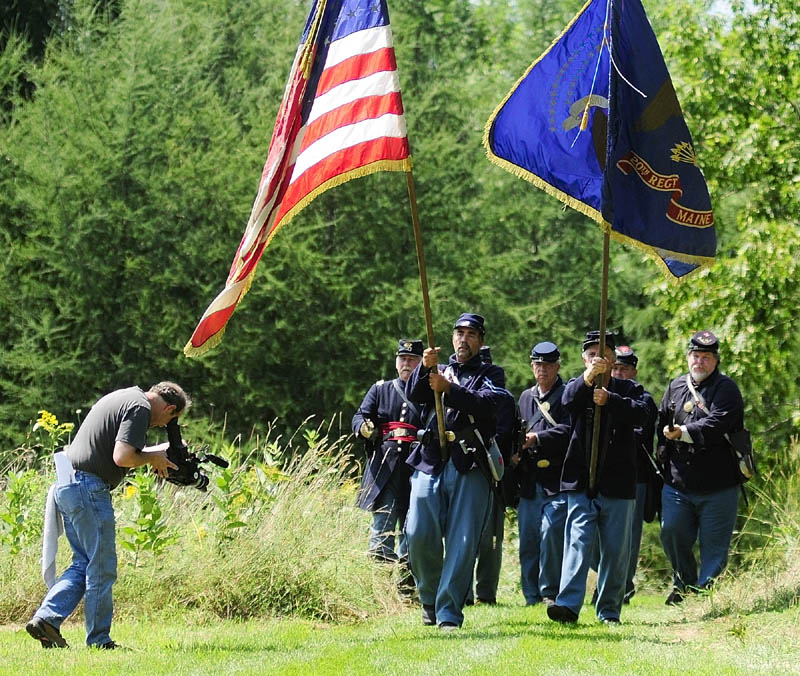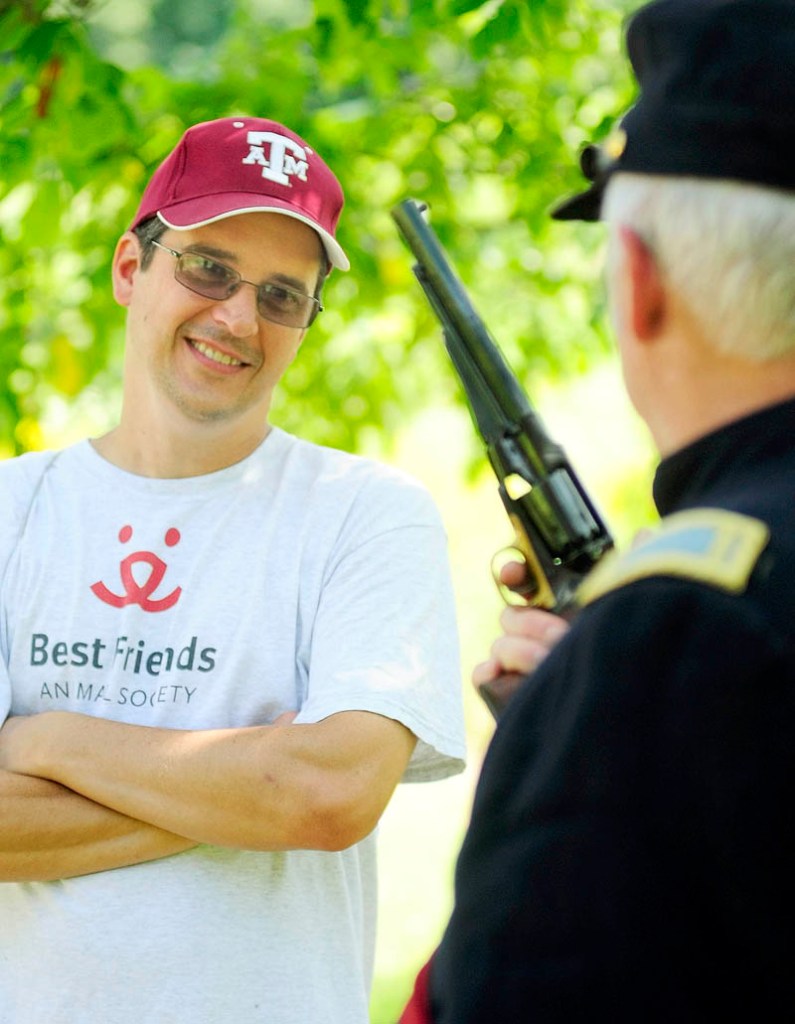AUGUSTA — Pvt. Art Custer promptly followed each of Lt. Paul Dudley’s sharply barked commands, making sure he performed all nine of the steps required to load his Civil War-era musket before he cracked off a loud shot over the trees of Viles Arboretum, smoke trailing out the end of the barrel.
“Any time you load, you automatically go through all nine steps, because if you miss one, you’re basically left with a club,” instead of a gun, Pvt. Steve Henry explained to a handful of spectators as members of Company B of the 20th Maine Infantry Regiment Civil War living history group demonstrated how soldiers fired their muskets.
Most of the soldiers had bayonets on the ends of their muskets, but Dudley, of Easton, and Henry, of Winthrop, explained why Civil War soldiers didn’t really want to be on either end of a bayonet.
For the soldier being stabbed by a bayonet, the downside is obvious. You’re likely to die a slow, painful death, Dudley said.
For the soldier doing the stabbing, the downside was more subtle.
“If you’re attacking a soldier with a bayonet, you’re so close you’re looking into his eyes as you do it, that’s murder,” Dudley said. “But if you’re shooting at them, in a line, you can’t really tell for sure, when someone goes down, whether it was your shot that got them.”
Henry added of the soldiers, “Were God-fearing people, raised on ‘Thou shalt not kill.’ Then all of a sudden they have to kill by the dozens.”
Such is the life of a Civil War soldier, most of whom weren’t soldiers until they volunteered to join the fray.
Henry has been a re-enactor for some 23 years, since he watched a re-enactment for a school project for which he had to paint a mural of the Battle of Stones River, in Tennessee. He was fascinated by the re-enactors and, after a six-year stint in the modern Army, he came home to Alabama and joined some re-enactors. He has since served in re-enactments as both a Union and a Confederate soldier.
“In Alabama it was always hard to get people to be Union soldiers,” Henry said, wearing his blue woolen Union uniform on a sweltering Saturday afternoon in Augusta. “You’d have 40 Yankees and 300 Confederates, and the Yankees are supposed to win.”
Gary Moore, of Searsport, ran the “Sutler” booth at the re-enactment. In the Civil War, a sutler would sell goods, including soap, powder, canteens and other items to soldiers in the field. On Saturday at the Viles Arboretum, Moore sold 20th Maine T-shirts, carved wooden pistols and other souvenirs to spectators.
Moore said many re-enactors have one or more ancestors who served in the Civil War. Moore has multiple ancestors who served, with varying levels of distinction. They include William Scott, the “Sleeping Sentinel,” a Vermont Union Army soldier famously found asleep at his post in August 1861 while his unit was encamped at the Chain Bridge near Washington, D.C., according to Moore. He was scheduled to be executed for the offense in September but was pardoned by President Abraham Lincoln, at the recommendation of Maj. Gen. George McClellan.
Scott remained with his unit after being pardoned and was killed in April 1862 while charging the rifle pits at the Battle of Lee’s Mills in Virginia, according to multiple Civil War online forums.
A woman who identified herself only as Miss Rose, of Hinckley, was dressed as a washer-woman for the re-enactment Saturday. She said she re-enacts to honor the past, and pass it on to others.
A crew from the Maine Public Broadcasting Network filmed the re-enactors for a documentary.
Mark DesMeules, executive director of Viles Arboretum, said Saturday was the first time the arboretum has had reenactors at the 224-acres of woods and fields off Hospital Street.
“It’s one of a number of things we’re trying to bring people to the Arboretum and enjoy the grounds,” DesMeules said while grilling hamburgers and chicken to feed the re-enactors. “We have such a selection of fields and forest it’s a wonderful setting for a Civil War re-enactment.”
Send questions/comments to the editors.






